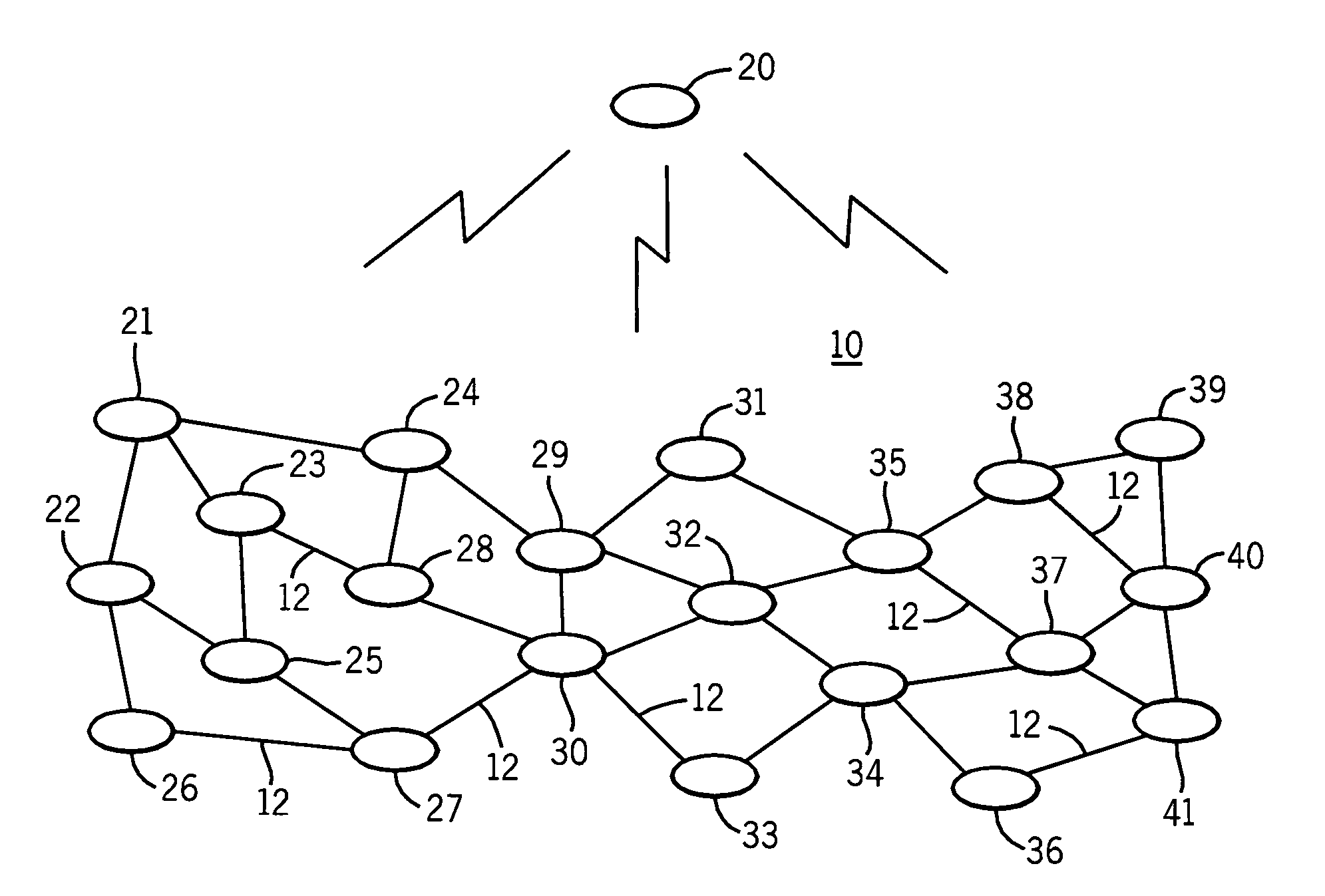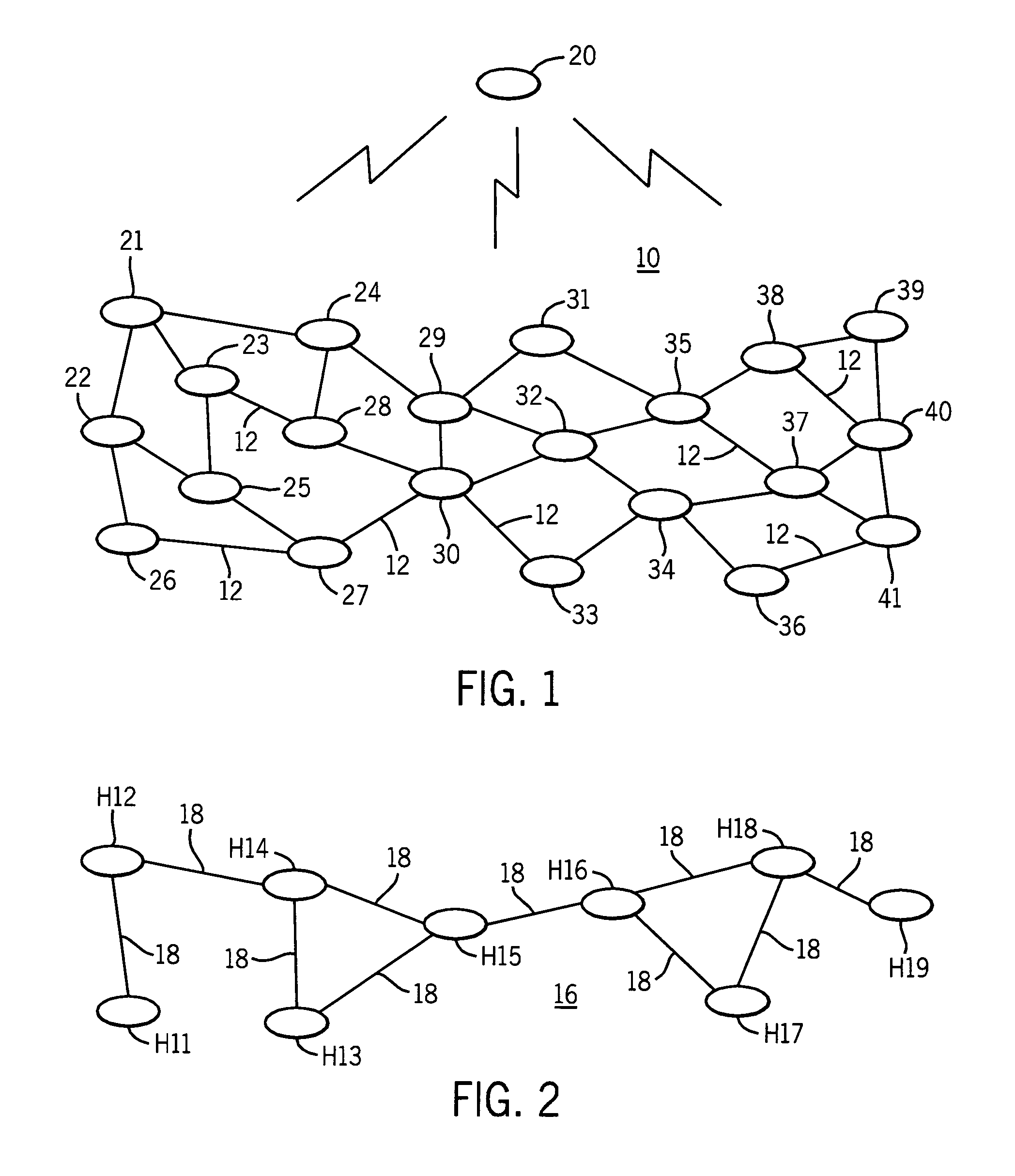Network routing process for regulating traffic through advantaged and disadvantaged nodes
a network routing and traffic technology, applied in the field of network routing protocols for use in digital communication networks, can solve problems such as serious communication problems, congestion and routing bottlenecks, and unstable or unreliable service, and achieve the effect of not requiring a large amount of computational overhead
- Summary
- Abstract
- Description
- Claims
- Application Information
AI Technical Summary
Benefits of technology
Problems solved by technology
Method used
Image
Examples
Embodiment Construction
[0018]Referring now to FIG. 1, the network 10 constitutes a MANET network comprising the communications nodes 20-41 which represent black box radio systems sharing a common physical radio frequency (RF) channel (no isolation) and implementing one or more communications waveforms and associated digital networking protocols. The nodes 20-41 may be routers or hosts and may be linked to other nodes (not shown) by non-RF interfaces to form hybrid network systems. Node 20 comprises an advantaged node by virtue of its ability to communicate with all of the nodes 21-41. The communications links extending between adjacent nodes such as links 12 indicate that these nodes are one-hop RF neighbors which on account of their more limited range for communications may be termed non-advantaged nodes. The lightning bolt symbols indicate the general RF coverage zone of the advantaged node, which in this particular example includes all of the nodes 21-41. The higher connectivity of the advantaged node ...
PUM
 Login to View More
Login to View More Abstract
Description
Claims
Application Information
 Login to View More
Login to View More - R&D
- Intellectual Property
- Life Sciences
- Materials
- Tech Scout
- Unparalleled Data Quality
- Higher Quality Content
- 60% Fewer Hallucinations
Browse by: Latest US Patents, China's latest patents, Technical Efficacy Thesaurus, Application Domain, Technology Topic, Popular Technical Reports.
© 2025 PatSnap. All rights reserved.Legal|Privacy policy|Modern Slavery Act Transparency Statement|Sitemap|About US| Contact US: help@patsnap.com



